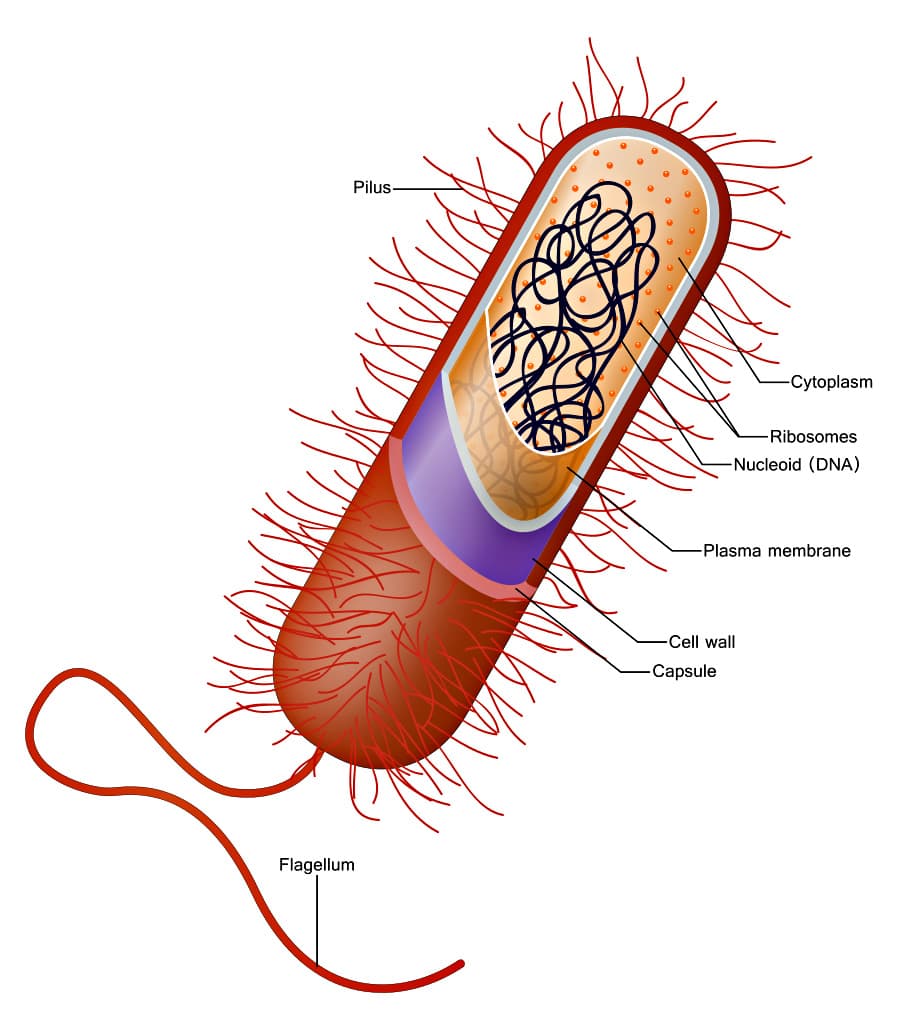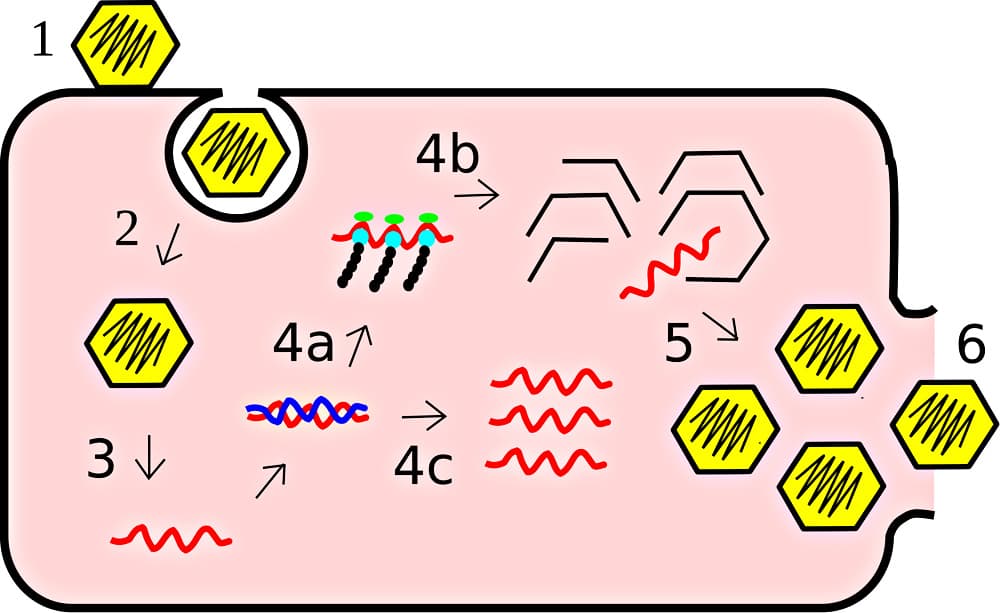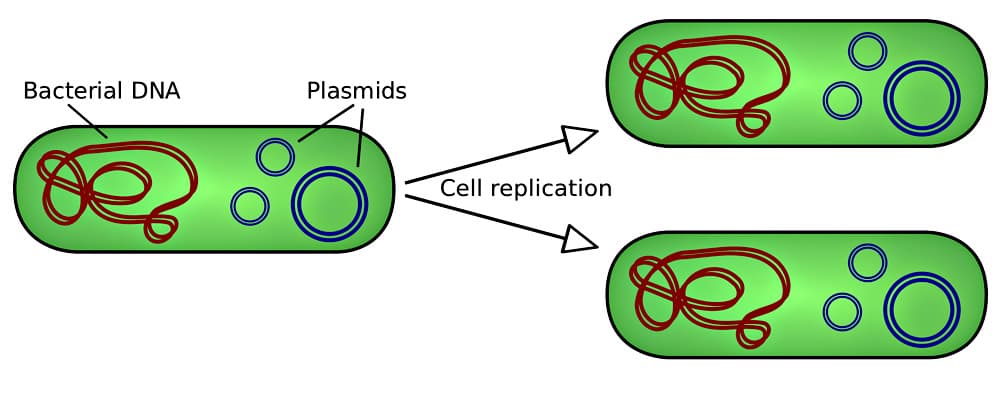Background
Germs as Invaders
Study of five senses is a natural entryway into this unit on germs. Starting, students would activate prior knowledge on the 5 senses, using simple explanations on how the eyes, ears, nose, tongue, and skin work.
Our bodies can be thought of as a castle, with the skin acting as our castle walls. Like castle walls skin is strong, however sometimes there are cracks. This is where germs can act as invaders. They are so small that they can find their way into even very small cracks without being seen. These invaders are not only invading into our skin, but deeper into our bodies and where they are finding our cells. Once germs find a way in they might stay for a while. The invaders devour nutrients and energy and can produce toxins, which are proteins acting as poisons. These toxins can cause symptoms of common infections, such as coughing, vomiting, fevers, and rashes.
What are Germs? The word germ dates back to the 1640’s meaning “bud, or sprout”. It wasn’t until 1796 when the English first recorded the term as a “seed of disease”, and then in 1871 a “harmful microorganism”.1 Today we define germs as a microorganism causing disease.2 Germs are found all over the world, and can live in all kinds of places. There are four major types of germs: bacteria, viruses, fungi, and protozoa. These microorganisms can invade plants, animals, and people and sometimes make us sick. Because viruses and bacteria, cause many well-known diseases, it is common to confuse them. A look at the size, structure, reproduction, hosts, and diseases caused by each will shed some light on the important differences between these germs.
Cells
A cell is the smallest functional unit of a living thing. A living thing, whether made of one cell (like bacteria) or many cells (like a human), is called an organism. Thus, cells are the basic building blocks of all organisms. Several cells of one kind that interconnect with each other and perform a shared function form tissues, several tissues combine to form an organ (your stomach, heart, or brain), and several organs make up an organ system (such as the digestive system, circulatory system, or nervous system). Several systems that function together form an organism (like a human being).3
There are 37.2 trillion cells in the human body.4 These human cells are considered to be animal cells. These differ from bacterial cells in their structure and function. Plants too are made up of multiple cells that create plant structures similar to our organs and organ systems. There are differences between plant and animal cells; most notably plant cells have a cell wall and contain chloroplast. Scientists tend to model these two cells differently due to the cell wall giving the plant cell a rectangular shape and the animal cell a circular shape. Plant cells are also more rigid than animal cells, due to the presence of a cell wall. Even though animals and plants are multicellular organisms, their cells share many commonalities with each other and with bacterial cells.
Structurally plant and animal cells share some commonalities with each other. Both plant and animal cells are eukaryotic cells, meaning that they both contain a nucleus surrounded by a membrane and whose DNA is bound together by proteins into chromosomes. These different cells also both contain similar membranes, cytosol, and cytoskeleton elements.
Viruses
Viruses are very tiny, simple organisms that depend on living cells to grow and reproduce. They are so tiny they can only be seen with a very special powerful microscope called an electron microscope. Viruses are so simple they are technically not even considered “alive”. They are not able to metabolize, grow, or reproduce on their own, and must take over a host cell that provides these functions. Viruses have no capacity for independent protein synthesis or for generation of their own energy supplies. They have no cell wall or nucleus, they reproduce by assembly of various viral pieces and not by growth and division like bacteria do.5 They cannot thrive long without being inside a plant, animal, or person (its host). The structure of the virus is simple and not sufficient for an independent life. Despite the simplicity of their structures, they can still be elegant in design (Figure 1).

Fig. 1: The structure of a typical bacteriophage. Image Credit: Graham Colm. Public Domain
Viruses are a fraction of the size of a human cell or even bacteria, which allows them to invade and be dependent on them to replicate themselves. When they enter into a human’s body and invade their cells, they can spread and make people sick. The virus uses the cell’s energy and materials to produce and make numerous copies of the original virus. While the virus is replicating inside the cell it can produce dramatic biochemical and structural changes inside the hosts cell, even leading to cell damage.6 Some viruses such as the common cold or rhinovirus kill the cell through bursting, releasing all the replicated viruses at once. Other viruses may just cause enough cell damage to make it impossible for the cell to function normally. Common viruses are the chickenpox, measles, influenza (flu), and rhinovirus.
Bacteria
Bacteria are very different than viruses. They are much larger in size and although they are more complex than a virus, the structure of a bacteria is still relatively simple. They contain the bare minimum elements to stay alive and reproduce; those elements are chromosomes, ribosomes, cytoplasm, and an outer membrane (Figure 2). They can have a number of shapes, ranging from spheres to rods and spirals. Bacteria are one-celled microorganisms that obtain nutrients from their environment in order to live. Strains of bacteria can grow nearly everywhere. These microbes have been around for so long because they are able to adapt to their ever-changing environment. They can even live in places where it was once thought that nothing could survive. Some kinds of bacteria can live in the human body. Many of these bacteria are helpful to humans, but others can cause disease. Bacteria can cause infections, sore throats, cavities, pneumonia, tuberculosis, lime disease, and bacterial infections.
Unlike viruses, a bacterium can replicate by itself. It is not dependent on another organism to replicate. Since bacteria multiply rapidly by a process called binary fission, the repeat replication of DNA is sometimes prone to errors.

Fig. 2: Structure and components of a typical gram-positive bacterial cell. Image Credit: Ali Zifan. Public Domain
Not all bacteria are bad. Some bacteria are essential for our bodies and help keep things in balance. Good bacteria live in our intestines and help us use the nutrients in the food we eat. Their job is to break down nutrients such as sugars and fats humans otherwise could not digest. Most of the bacteria in the gut are known as anaerobes, which favor growth in an environment with little or no oxygen. Besides aiding in digestion, gut bacteria also synthesize certain vitamins and aid the immune system. Some bacteria are also used by scientists in labs to produce medicines and vaccines.
Germs Attack
Germs can spread easily and attack our bodies; specifically, viral germs can be spread by sneezing, coughing, or wet secretions that contaminate surfaces. These wet secretions can contain viruses that can survive up to 4 days on solid surfaces.7 Viruses can also easily spread within people in close quarters and in places with low humidity and low temperatures, both of which enhance viral survival.
Viruses infect our bodies in a series of steps (Figure 3). The virus first attaches to a host cell. The attachment involves two minimum components; there is a virus attachment complex and there are also cellular receptors for the virus, either proteins or sugar receptors. Next the virus enters the cell: some viruses melting into the cell membrane and others are swallowed by the cell. Then viruses utilize one of three unique patterns of replication, depending on which genetic material they possess: DNA or RNA. New protein coats are synthesized within the host cell, leading to mature viruses being assembled inside the cell. The cell then ruptures releasing the new mature virus particles, which are free to go and infect other cells. What happens to the cell that the virus was in? Some infections will result in a complete host cell shutdown, which leads to cell death. Other viruses may selectively inhibit a specific host cell function and just leave a damaged form of the cell.

Fig. 3: Virus replication cycle. Image Credit: Franciscope. Public Domain
Comparable to viruses, bacteria can easily spread and attack our bodies. Bacteria can be passed by touching or shaking hands with another person. Touching food with dirty hands can spread bacteria, as the bacteria are ingested with the food and in the intestine. Some bacteria can cause diseases, either because they end up in the wrong place in the body or simply because they are “designed” to invade us.
Bacteria reproduce by binary fission. In this process the bacterium, which is a single cell, divides into two identical daughter cells (Figure 4). Binary fission begins when the DNA of the bacterium divides into two. The bacterial cell then elongates and splits into two daughter cells each with identical DNA to the parent cell. Each daughter cell is a clone—or identical copy—of the parent cell. Many bacteria make us sick in the same way that viruses do, but they also have other strategies at their disposal. Sometimes bacteria multiply so rapidly they crowd out host tissues and disrupt normal function. Sometimes they kill cells and tissues outright. They can make toxins that can paralyze, destroy cells’ metabolic machinery, or precipitate a massive immune reaction that is itself toxic.

Fig. 4: Bacteria cell division. Image Credit: Spaully. Public Domain
Immune System Response
In response to infection, your immune system springs into action, similar to how an army would defend its castle against invaders. The immune system in humans is an incredibly complex organ system, which functions throughout the body to protect us from disease. White blood cells, antibodies, and other elements of the immune system go to work to rid your body of the foreign invader. Many of the symptoms that make a person suffer during an infection – fever, malaise, headache, rash – result from activities of the immune system trying to eliminate the infection from the body. The innate defense and adaptive defenses play a key role in how our body fights off invaders.8
The innate immune system is the initial line of defense. It reacts immediately and goes to work within hours. It can immediately recognize different germs or pathogens as the enemy. This mechanism includes physical barriers such as skin, chemicals in the blood, and immune system cells that attack foreign cells in the body. The innate immune response is activated by chemical properties of the pathogen. This method however is not always completely effective. As described by Saltzman, “The innate immunity is not always completely effective in keeping pathogens out of the body. Some pathogens have developed ways to avoid detection by the innate immune system. In addition, the innate immune system might simply fail to work effectively enough to clear the pathogen before an infection is established.”9
Some pathogens have developed as to not be seen by the innate immune system, so our immune system has a second line of defense, called the adaptive system. The adaptive immunity leads to a pathogen specific immune response. Because it is specific for the pathogen, it is much more complex than the innate response. It also takes time to develop: these defenses may not be triggered for days. Once the pathogen has been recognized, the adaptive immune system creates an army of immune cells specifically designed to attack the pathogen. The adaptive system response is capable of remembering the pathogens it has encountered, acting on memory, and giving a specific response.
Neutralizing Germs
How do we neutralize the germs? Since viruses are structurally different than bacteria it is important to know that no antibiotics will work in preventing virus replication. Antiviral medications do exist, but not as many compared to antibiotics. This is why vaccinations, and antibodies are so important in the fight against viral diseases. Antibodies are not to be confused with antibiotics. Antibodies are an essential part of the immune system and contribute to neutralize both viruses and bacteria. Using binding mechanisms, an antibody can neutralize its target directly or tag it for attack by other parts of the immune system. Vaccines help prevent virus replication and immunity by imitating an infection. This infection, however does not cause illness, but does help the body produce antibodies for future potential exposure to the virus. The antibodies in your immune system are then prepared for the potential invasion.
Bacteria neutralization occurs by antibodies in our immune system as discussed previously. In addition, many drugs called antibiotics have been developed to treat bacterial infections. There are occasions where the natural immune cannot fight off a bacterial infection, or where the immune response is slow. In these situations, antibiotics are useful. Antibiotics either stop the bacteria from reproducing or they destroy them. “Antibiotics work by affecting things that bacterial cells have but human cells don’t.”10
Conclusions
Over the course of this curriculum unit, I reviewed how the immune system can be thought of as a castle defending our bodies to foreign invaders such as germs. I described two of the more common categories of germs, viruses and bacteria. I also reviewed the elements of the immune system, specifically the innate and adaptive defenses. Lastly, I touched on the neutralization of viruses and bacteria using our own antibodies, or vaccines, and antibiotics.
While much of the science of pathogens and our immune system will be outside of the scope of what kindergarteners need to know, or are ready to understand, I believe that it is critical for all educators to instill a love for scientific concepts in students at an early age. Educators will benefit from having access to the research and deeper understandings marshalled and presented in this curriculum unit.
The implications of this process fall well outside of the utilization of pathogens within our bodies. In exposing students from an early age to these concepts, I hope to encourage a lifelong love of science that will inspire our young learners and future leaders to look to science for solutions to problems on staying heathy.

Comments: